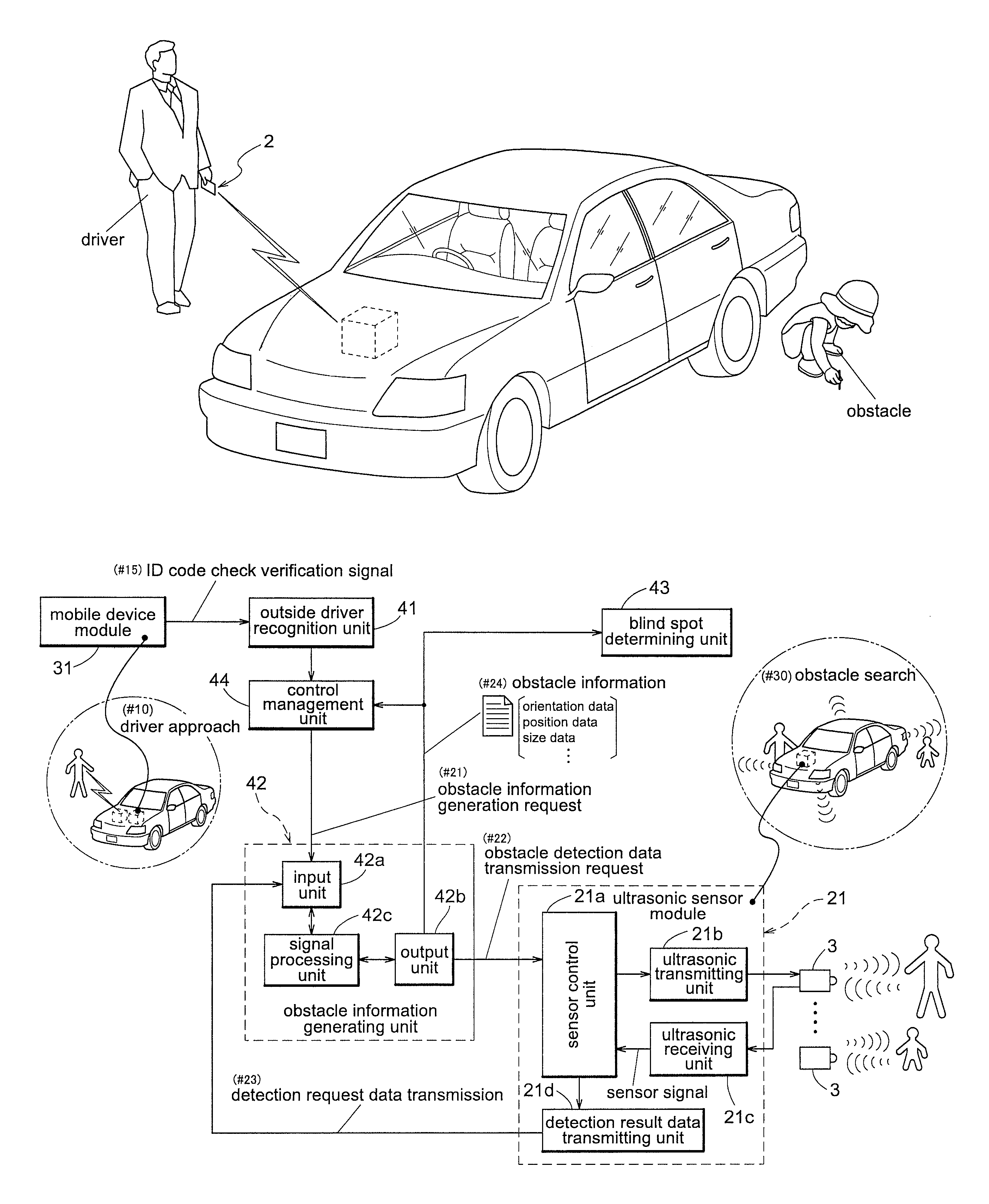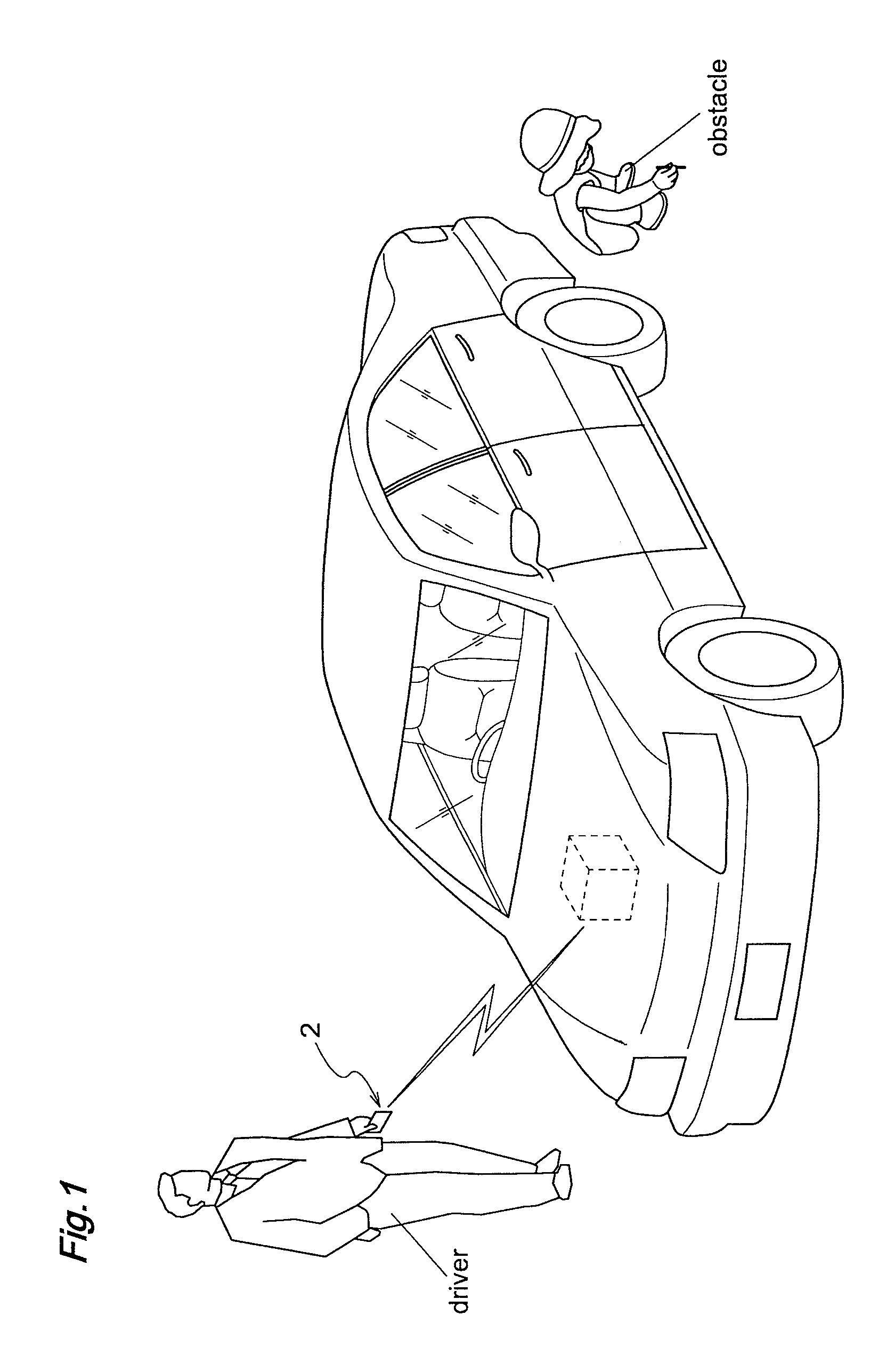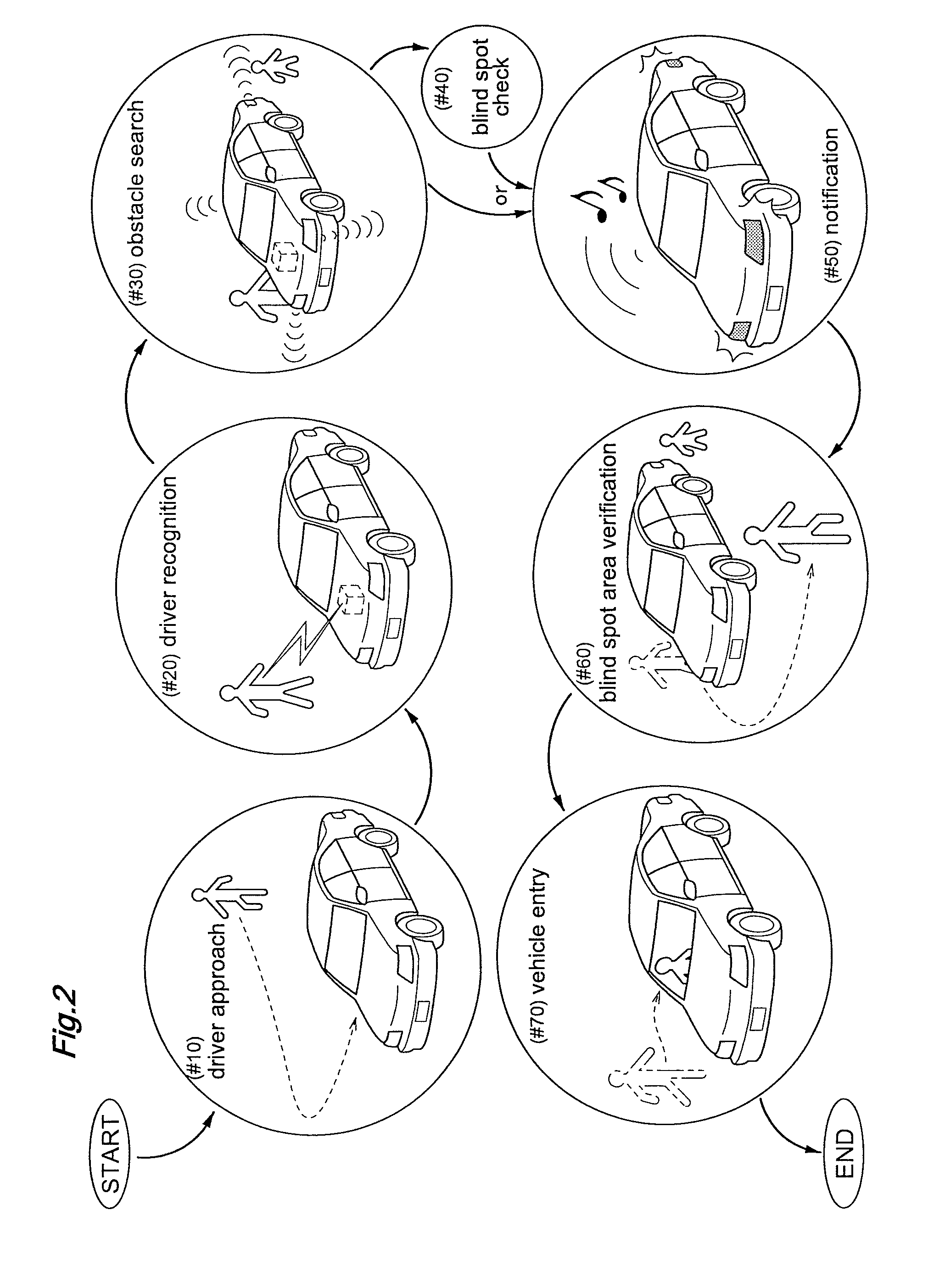Method of monitoring vehicle surroundings, and apparatus for monitoring vehicle surroundings
a vehicle and surroundings technology, applied in the field of vehicle surroundings monitoring and vehicle surroundings, to achieve the effect of avoiding hassl
- Summary
- Abstract
- Description
- Claims
- Application Information
AI Technical Summary
Benefits of technology
Problems solved by technology
Method used
Image
Examples
Embodiment Construction
[0037]The following is an explanation of an embodiment of the present invention with reference to the drawings.
[0038]In FIG. 1, a passenger car serves as an example of a vehicle in which an apparatus for monitoring the surroundings of a vehicle according to the present invention has been mounted. Here, a small child is crouching near the rear left wheel of the vehicle, and is the obstacle to be verified. Because this vehicle has the steering wheel on the right side, the area on the left side of the vehicle near the rear wheel is a blind spot for a driver entering the parked vehicle. This vehicle includes a driver recognition system in which a driver about to enter the vehicle is recognized before entering the vehicle. Here, for example, the driver is carrying an IC card 2 such as a radio-type mobile device.
[0039]FIG. 2 is a flowchart showing the basic flow of a method for monitoring the surroundings of a vehicle according to the present invention. First, the driver approaches the ri...
PUM
 Login to View More
Login to View More Abstract
Description
Claims
Application Information
 Login to View More
Login to View More - R&D
- Intellectual Property
- Life Sciences
- Materials
- Tech Scout
- Unparalleled Data Quality
- Higher Quality Content
- 60% Fewer Hallucinations
Browse by: Latest US Patents, China's latest patents, Technical Efficacy Thesaurus, Application Domain, Technology Topic, Popular Technical Reports.
© 2025 PatSnap. All rights reserved.Legal|Privacy policy|Modern Slavery Act Transparency Statement|Sitemap|About US| Contact US: help@patsnap.com



